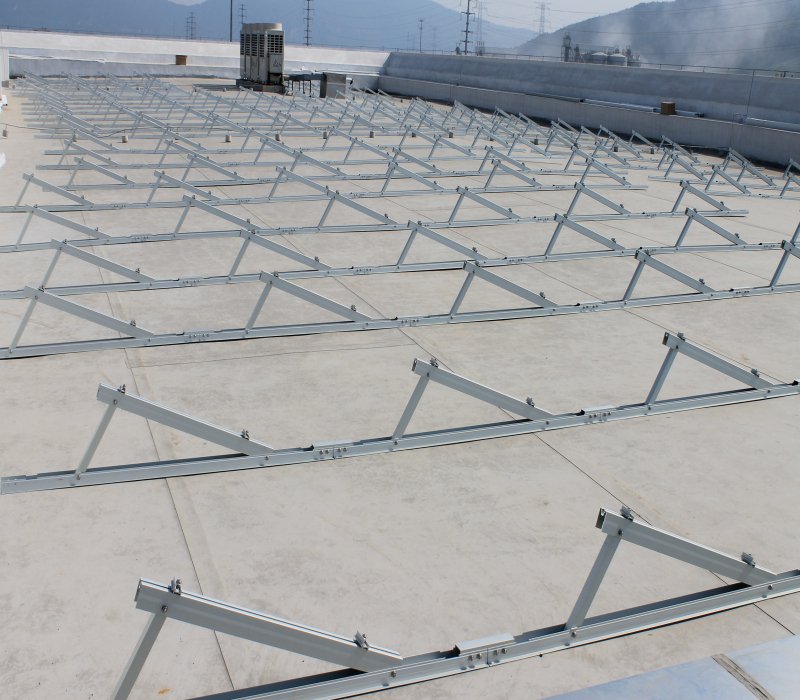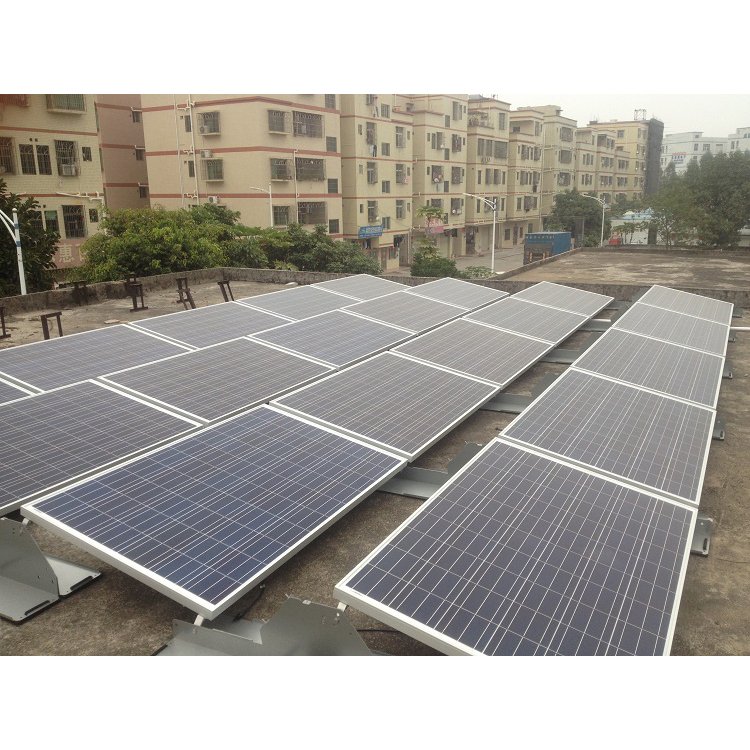-
2103 Room NO.322 Xinggang One Road,Haicang District,Xiamen Fujian,China

Features and Considerations of Flat Roof Mounting Systems for Solar PV
Table of Contents
A solar mounting system refers to the framework or base that supports solar panels (also known as solar modules or PV panels). Different roof types require different mounting systems. This article focuses on the characteristics of mounting systems designed specifically for flat roofs, known as flat roof mounting systems.
Types of Solar Mounting Systems
Solar mounting systems are generally categorized into the following three types:
- Flat roof mounting systems
- Trapezoidal roof mounting systems
- Ground-mounted systems
The first two types are installed on building rooftops, while ground-mounted systems are placed directly on the earth.
👉 Related Product: Flat Roof Solar Mounting System
Key Features of Flat Roof Mounting Systems
A flat roof (陸屋根) is a roof without a slope. Since it is level like the ground, the mounting system must create a sufficient tilt angle to optimize sunlight exposure.
Structure and Design
Typically, a foundation base is laid, upon which the angled mounting frame is installed. This design helps ensure optimal solar generation.
Environmental considerations such as snow load and strong wind conditions are critical for flat roof installations. It’s important to choose a mounting system with the right material strength and installation height based on local weather conditions.
Common Materials Used
The primary materials used in solar mounting systems include:
- Stainless steel
- Galvanized steel
- Aluminum
For flat roofs, penetration can be a concern as drilling may lead to water leakage. As an alternative, ballasted mounting systems that use concrete blocks as weights can be installed without penetrating the roof surface.
👉 Explore: Ballasted Solar Mounting System for Flat Roofs

Roof Types Compatible with Solar PV
While solar can technically be installed on any roof, certain roof styles offer better performance and installation ease:
Gable Roofs
Common in residential homes and some warehouses. Easy to install and maintain with low additional costs.
Hip Roofs
Frequently seen in residential buildings. PV modules can be installed on three of the four slopes, though the total installation area is smaller than gable roofs.
Monopitch Roofs
Often used for factories and warehouses. Excellent workability and ideal orientation can result in high cost-performance.
Flat Roofs
Flat roofs offer large usable space and can even support high-voltage systems, allowing inverters and transformers to be installed on the same roof. However, due to the lack of natural drainage or slope, careful planning is needed to ensure disaster resilience.
👉 Check out: Concrete Flat Roof Solar Mounting System
Key Points for Flat Roof PV Installations
Flat roofs offer the advantage of easy installation and maintenance. You can freely adjust the direction of the panels to capture maximum sunlight.
However, accurate engineering calculations are essential. Factors such as snow loads, wind resistance, frame tilt, and mounting height must be customized for the local environment. Choose a structure with strong durability to withstand harsh conditions.
👉 Browse: Commercial Roof Mounting Systems

Need Expert Advice? Contact Firstsolar
Solar mounting systems are a core component in ensuring safe and efficient solar power generation. Therefore, selecting the right mounting system requires expert evaluation.
If you’re unsure which system suits your project, contact Firstsolar. We offer a wide range of mounting products and can recommend the best solution for your specific goals—whether it’s prioritizing cost-efficiency or maximum durability.
👉 Visit: Firstsolar Solar Mounting Solutions








